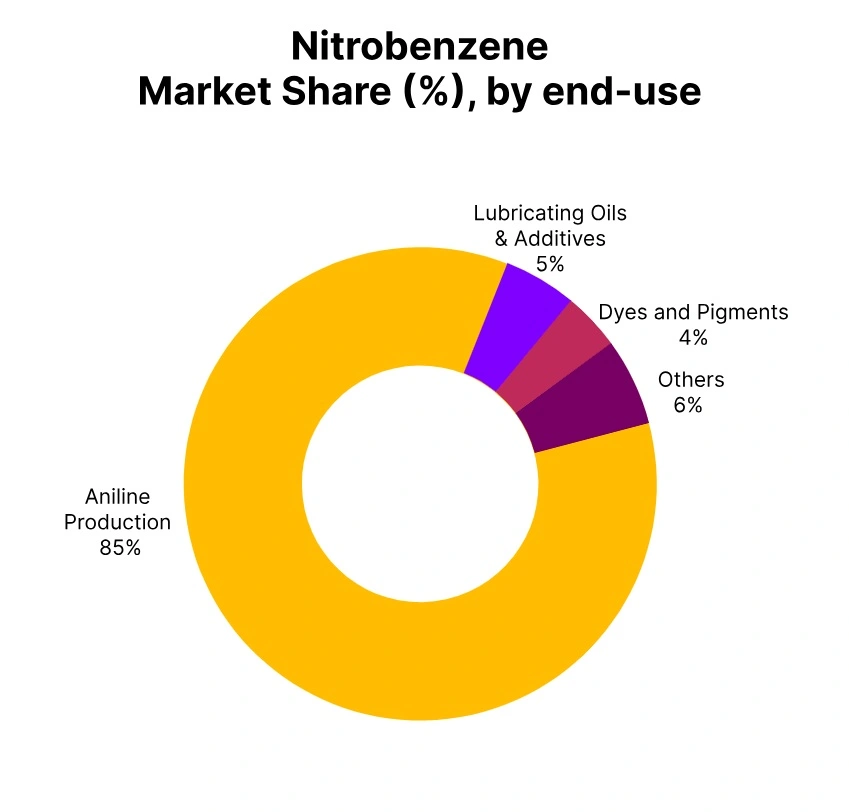Price-Watch’s most active coverage of Nitrobenzene price assessment:
- Technical Grade (>99%) FOB Busan, South Korea
- Technical Grade (>99%) CIF Nhava Sheva (South Korea), India
- Technical Grade (>99%) Ex-Mumbai, India
- Technical Grade (>99%) CIF Port of Singapore (South Korea), Singapore
- Technical Grade (>99%) CIF Houston (South Korea), USA
Nitrobenzene Price Trend Q3 2025
In Q3 2025, the global Nitrobenzene market experienced a softening price trend, driven by stable feedstock availability, cautious buyer sentiment, and subdued downstream demand. Freight conditions remained largely steady, allowing for consistent international trade flows, though procurement activity showed limited momentum across the quarter. Inquiries remained moderate, with many buyers adopting a conservative approach amid comfortable inventory levels and minimal supply disruptions.
Producers maintained competitive FOB offers to sustain market presence, but limited consumption growth capped any significant price recovery. Overall, the Nitrobenzene price trend reflected a bearish outlook, with values declining gradually across most markets due to oversupply concerns and restrained buying interest.
South Korea
Nitrobenzene Export prices FOB Busan, South Korea, Technical Grade (>99%).
In Q3 2025, the Nitrobenzene prices in South Korea under FOB Busan terms registered a noticeable decline amid limited export demand and stable operating rates. Producers managed consistent output supported by steady availability of key feedstocks like Benzene and Nitric Acid, though downstream interest remained subdued across multiple trade destinations.
The export trend was weaker in the first half of the quarter, with recovery seen only toward the end. Offers were competitively placed to sustain market share in key import hubs. The Nitrobenzene price trend in South Korea reflected this soft sentiment, with prices ranging between USD 840–910 per metric ton, showing a 7.19% decline compared to the previous quarter.
In September 2025 Nitrobenzene prices reflecting a 3.44% drop from the previous month. The decline in offered prices resulted from moderate demand within core downstream chemical segments and an abundant supply of Nitrobenzene’s key raw materials such as benzene and concentrated acids.
India
Nitrobenzene Import prices CIF Nhava Sheva, India, Technical Grade (>99%).
According to PriceWatch, in Q3 2025, the Nitrobenzene prices in India under CIF Nhava Sheva terms experienced a moderate downward adjustment due to softened freight rates from South Korea and balanced inventory levels. While port logistics remained efficient, the number of inquiries saw only marginal growth throughout the quarter, reflecting a cautiously optimistic market sentiment.
Domestically, buyers adopted a wait-and-watch approach amidst stable feedstock availability, mainly Benzene and Nitric Acid. Suppliers maintained consistent offers under FOB Busan terms, with Indian importers negotiating bulk volumes toward the quarter-end.
The Nitrobenzene price trend in India was slightly negative, with prices assessed between USD 925–970 per metric ton, registering a 2.57% change from the previous quarter. In September 2025 Nitrobenzene prices falling by 1.85%. Price moderation was driven by balanced market activity and steady supply of material from South Korea, with no reported shortages or escalations in spot purchasing.
Singapore
Nitrobenzene Import prices CIF Port of Singapore, Singapore, Technical Grade (>99%).
In Q3 2025, the Nitrobenzene prices in Singapore under CIF Port of Singapore terms observed a modest decline, primarily due to steady freight conditions and weak downstream demand across Southeast Asia. Trade routes from South Korea remained stable, with no significant delays reported. The number of inquiries stayed limited, suggesting buyer hesitation amid adequate stock positions.
Market participants noted that while upstream raw materials like Benzene remained steady, competitive FOB offers from South Korea capped any upward momentum. As a result, the Nitrobenzene price trend in Singapore stayed soft throughout the quarter.
Prices ranged between USD 920–995 per metric ton, reflecting a 6.87% decrease from the previous quarter. In September 2025 Nitrobenzene prices down 3.55%. This pronounced decrease was due to mild correction in export demand from Singapore, stable supply in South Korea, and competitive offers influenced by slight logistical improvements.
USA
Nitrobenzene Import prices CIF Houston, USA, Technical Grade (>99%).
According to PriceWatch, in Q3 2025, Nitrobenzene prices in USA under CIF Houston freight rates for Nitrobenzene imports from South Korea showed stability, but sluggish domestic demand and high inventory levels weighed on price realizations. The number of inquiries from U.S. buyers remained subdued as many adopted a cautious stance, driven by expectations of further price softening.
Supply from South Korea under FOB Busan terms remained active, but aggressive negotiation from buyers limited upside potential. Furthermore, subdued demand for feedstocks like Benzene added to the bearish tone. The Nitrobenzene price trend in the USA remained under pressure, with prices assessed between USD 960–1100 per metric ton, indicating a 5.90% quarter-over-quarter drop.
In September 2025 Nitrobenzene prices decreasing sharply by 4.83%. The price drop reflected active de-stocking by sellers, competitive spot offerings from South Korea, and robust supply in origin and destination markets.



